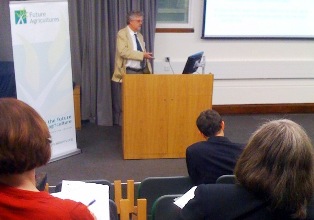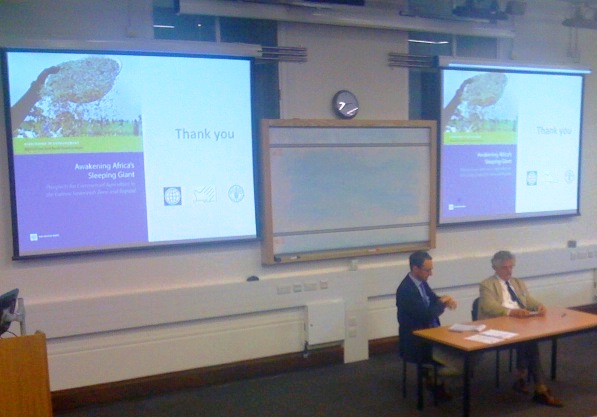
With continuing strong world prices for agricultural commodities, agriculture researchers met recently in London to examine how African farmers might boost commercial production of crops such as rice and cotton. The workshop goal was to critically examining a recent study from the World Bank and the UN Food and Agriculture Organization (FAO) that concludes that up to 400 million hectares of African savannah are available for agricultural production, with the potential to make Africa an important competitor on global markets. At present, only about 10% of the 600 million hectares of the savannah is under production. Read about this workshop
The study, titled Awakening Africa’s. Sleeping Giant: Prospects for Commercial Agriculture in the Guinea Savannah Zone and Beyond compared Africa’s Guinea Savannah with two other formerly unpromising agricultural regions in the developing world: Brazil’s Cerrado and the Northeast Region of Thailand. Though Brazil and Thailand had physical disadvantages, these areas were able to transform their agricultural production within a generation to dominate important world markets.
Based on detailed case studies from Brazil, Thailand and three African countries (Mozambique, Nigeria and Zambia), the study concludes that opportunities exist for African farmers to compete effectively in regional and global markets. Considerable challenges will have to be overcome, however, and recent progress observed in a number of African countries could easily be reversed by poor policy decisions.
The experts’ workshop was held on June 21st and 22nd at the School of Oriental and African Studies (SOAS)  Russell Square, London. At the workshop Hans Binswanger-Mkhize, one of the report’s authors, challenged participants to examine the potential for commercial production in Africa and what is needed to boost production and compete in regional and global markets. However, participants were also being asked to answer questions such as:
Russell Square, London. At the workshop Hans Binswanger-Mkhize, one of the report’s authors, challenged participants to examine the potential for commercial production in Africa and what is needed to boost production and compete in regional and global markets. However, participants were also being asked to answer questions such as:
- Is the Guinea Savannah really a “still largely unexploited area” or will efforts to exploit this zone through intensive agriculture displace other productive, but largely unseen activities?
- What are the major environmental constraints to the promotion of commercialised agriculture in the Guinea Savannah and can these be managed appropriately?
- Given potential political economy factors driving interest in this zone, can commercialised agricultural development in the Guinea Savannah really be productive, profitable and pro-poor?
The workshop is another event launched by us.
For more information
- The Future Agricultures Consortium: www.future-agricultures.org
- School of Oriental and African Studies (SOAS): http://www.soas.ac.uk
- Book: Awakening Africa’s. Sleeping Giant: Prospects for Commercial Agriculture in the Guinea Savannah Zone and Beyond
- Study: Competitive Commercial Agriculture for Africa
